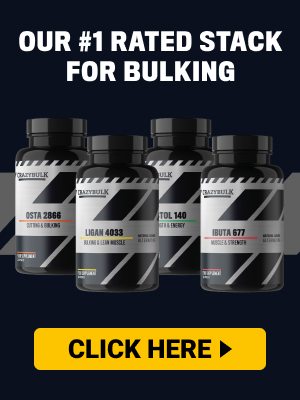PHAT vs PPL: Which Program Builds More Muscle and Strength?
If you’re serious about lifting, you’ve likely heard of PHAT and PPL — two popular training systems that emphasize frequency, volume, and progression.
- PHAT (Power Hypertrophy Adaptive Training), created by Dr. Layne Norton, blends powerlifting-style strength work with bodybuilding hypertrophy volume.
- PPL (Push Pull Legs) is one of the most flexible and widely adopted training splits, used by everyone from beginners to advanced lifters.
So, when it comes to PHAT vs PPL, which program comes out on top?
The truth is, both are excellent — but they shine in different contexts. Let’s break them down side by side to help you choose.
🔎 Quick Overview
- PHAT:
- 5-day split
- Combines heavy compound lifts, explosive speed work, and high-rep hypertrophy training
- High weekly volume (18–25+ sets per muscle group)
- Best for advanced lifters with elite recovery
- PPL:
- 3–6 day split (flexible)
- Organizes training by movement pattern: push, pull, legs
- Volume scales with frequency (12–25+ sets per muscle group)
- Best for intermediates and naturals who thrive on higher frequency
🏋️ What Is PHAT?
PHAT was designed by Dr. Layne Norton, a pro natural bodybuilder and powerlifter. It blends the strength principles of powerlifting with the muscle-building focus of bodybuilding.
Weekly Structure
- Day 1: Upper Power
- Day 2: Lower Power
- Day 3: Rest
- Day 4: Back & Shoulders Hypertrophy
- Day 5: Lower Body Hypertrophy
- Day 6: Chest & Arms Hypertrophy
- Day 7: Rest
Key Features of PHAT
- Heavy compound lifts on power days (low rep ranges).
- Explosive speed work to build power output.
- High-rep isolation and accessory work on hypertrophy days.
- Very high training volume (18–25+ sets per muscle per week).
- Demands elite recovery (sleep, nutrition, joint health).
👉 PHAT is not beginner-friendly. It’s designed for advanced lifters who can handle brutal training loads.
💥 What Is PPL?
The Push Pull Legs split organizes training by movements rather than body parts. It’s widely popular because it’s simple, effective, and highly customizable.
Example Weekly Layout (6-Day PPL)
- Day 1: Push (chest, shoulders, triceps)
- Day 2: Pull (back, biceps, rear delts)
- Day 3: Legs (quads, hamstrings, glutes, calves)
- Day 4: Push
- Day 5: Pull
- Day 6: Legs
- Day 7: Rest
Key Features of PPL
- Can be run 3, 4, 5, or 6 days per week.
- Trains each muscle group once (3-day) or twice (6-day) per week.
- Excellent balance of compounds and accessories.
- Volume and intensity can be scaled to any level.
👉 PPL is one of the most versatile training splits. It works for beginners (3-day version), intermediates (4–5 day), and advanced lifters (6-day).
🔍 PHAT vs PPL: Head-to-Head
Training Frequency
- PHAT: 5 days/week, 2x per muscle.
- PPL: 3–6 days/week, 1–2x per muscle.
👉 Winner: PPL (more flexible).
Training Volume
- PHAT: Extremely high (18–25+ sets per muscle).
- PPL: Moderate on 3-day, high on 6-day. Adjustable.
👉 Winner: Tie — PHAT wins for max volume, PPL wins for customization.
Strength Development
- PHAT: Built-in power days and speed training → excellent for strength.
- PPL: Can build strength but depends on exercise selection.
👉 Winner: PHAT (for strength).
Hypertrophy Potential
- PHAT: High volume, tons of accessory work, great for advanced hypertrophy.
- PPL: More frequency, still strong for hypertrophy (especially for naturals).
👉 Winner: Tie — PHAT suits advanced volume junkies, PPL better for intermediates/naturals.
Recovery Demands
- PHAT: Extremely high → requires perfect sleep, nutrition, and genetics.
- PPL: More manageable (3–6 days depending on schedule).
👉 Winner: PPL (less likely to burn out).
Complexity
- PHAT: Complex (speed work, multiple rep ranges, high variety).
- PPL: Simple and straightforward.
👉 Winner: PPL (more beginner/intermediate friendly).
Lifestyle Fit
- PHAT: Fixed 5-day routine → less flexible.
- PPL: Fits any schedule (3–6 days).
👉 Winner: PPL
📊 Side-by-Side Comparison Table
| Feature | PHAT | PPL |
| Days/Week | 5 | 3–6 |
| Frequency | 2x per muscle | 1–2x per muscle |
| Volume | Very high (18–25+ sets) | Adjustable (12–25+ sets) |
| Strength Training | Built-in power + speed work | Optional (depends on setup) |
| Complexity | High | Low–Moderate |
| Recovery Demand | Extreme | Moderate–High (scales) |
| Best For | Advanced lifters | Beginners to advanced |
✅ Which Program Should You Choose?
Choose PHAT if:
- You’re an advanced lifter with years of experience.
- You thrive on high volume and long workouts.
- You want to combine strength and hypertrophy in one system.
- You have excellent recovery (sleep, diet, stress management).
Choose PPL if:
- You’re a beginner or intermediate.
- You want a flexible program that adapts to your schedule.
- You need a sustainable balance of frequency and recovery.
- You want long-term progression without burning out.
⚡ PHAT vs PPL: Final Verdict
Both PHAT and PPL are excellent, but they cater to different types of lifters.
- PHAT is best for advanced lifters who can handle brutal training volume and want to merge powerlifting with bodybuilding.
- PPL is best for most lifters, especially intermediates and naturals, thanks to its flexibility, recovery balance, and frequency options.
👉 If you’re unsure, start with PPL. You can always graduate to PHAT once you’ve built the work capacity and recovery to handle it.
🔗 Next Steps:
- Full guide to the [PHAT Workout Program]
- Read the complete [Push Pull Legs Guide]
- Compare [PPL vs Bro Split: Which Builds More Muscle?]





